by vanseijen
Table of Contents
In this article I’m going to explain how to clean whitewall bicycle tires and make them look like new.
Whitewall tires or gumwalls look amazing on vintage bicycles, but are also very susceptible to look very dirty. I bought this amazing pair of Schwalbe Fat Frank‘s for my Cannondale M300. But a couple of MTB trails later and I even saw chain marks on the side of the tires. It was time to clean them up.
There is something you have to understand when it comes to cleaning tires. There are dirty tires and there are old tires. You can always remove dirt from bicycle tires, but you cannot restore old tires. So cracks and yellowing will stay cracked and yellow, no matter what you do.
A lot of the dirt on the tire is actually grease that’s come off from the chain. What you’ll find is that when you try to wipe it out you’ll actually only make one big mess of things. Grease won’t be wiped off easily. At best you can only smear it across a larger area.
That’s where the WD-40 comes in. WD-40 works kind of like a sticker remover. It makes the grease more fluid so it can be soaked up rather than smeared out. If you combine the WD-40 with baby wipes or paper towels, you can relatively easy get the grease of the wheel.
If you combine the WD-40 with baby wipes or paper towels, you can relatively easy get the grease of the wheel.
It’s best to clean the rim first. If your tires are dirty, your rims are dirty as well. And since the white of the tire will border the rim, any dirt on there is bound to get on the bicycle tire if you don’t remove it.
And while your at it, it’s always a wise move clean the sides of the rim if you have rim brakes. This will improve their performance.
You will need to use several wipes or towels, or else you simply reapply the grease taken off.
And that’s how you clean whitewall bicycle tires to look like new! If you like this article give it a thumbs up. If you have any questions or suggestions for new articles, let me know in the comments below. Cheers.
This website uses cookies to improve your experience. We'll assume you're ok with this, but you can opt-out if you wish. Cookie settingsACCEPT
Bike tires are one of the most neglected and ignored parts of your bike. It can be a real pain to clean because they tend to get dirty fast and leave behind a lot of grime. Dirt can cause uneven tires to wear, affecting your bike’s performance and handling. Don’t know how to clean bike tires in just a few minutes? When I am here, yes, you have the option to make bike tire washing simpler.
It can be a real pain to clean because they tend to get dirty fast and leave behind a lot of grime. Dirt can cause uneven tires to wear, affecting your bike’s performance and handling. Don’t know how to clean bike tires in just a few minutes? When I am here, yes, you have the option to make bike tire washing simpler.
Whether you’re a pro or new to cycling, this guide will help you learn how to clean bike tires in simple steps with some cleaning and maintenance tips.
Photo Credit: IstockphotoWhether you ride your bike to work or pleasure, or just take it out for a spin now and then, before you ride, it’s a good idea to check and clean your bike’s tires. Bike tires need regular cleaning and maintenance like car and motorcycle tires. If you don’t want them to become a nuisance, clean them routinely as per the bike’s need. But before cleaning the bike tires, make sure you get them dirty enough. Washing the tires every single day isn’t a good thing. So wash them only then when they are filthy. Here is an effective way to clean your bike tires to stay as clean and smooth as possible.
So wash them only then when they are filthy. Here is an effective way to clean your bike tires to stay as clean and smooth as possible.
Mtb bikes are designed for mountain biking; in detail, ride over rugged terrains or muddy roads. So it gets dirty very early, or you can say after every ride. Make it a point to clean them after every ride or at least 1-2 times in a week, instead of just once per month. And, if you are already a one-minute man, then just go ahead and start from here in case this might be too hard for you, so let’s get into the details for further information.
Road bikes are flat bike tire bikes designed to ride over flat pavement, so they don’t need to be cleaned earlier. Not only a road bike, any type of bike tires, be it a bicycle tire, electric bike, or any flat tire bike, even the jockey wheel (leaving only the mountain bike tire), won’t get dirty so quickly. So they don’t need cleaning before a month passes.
No matter which bike you win, the cleaning process will be the same; only the cleaning time will change. You just have to clean the mtb bike earlier, like once a week, and other bikes frequently, like once a month. Let’s give a closer look at the cleaning process.
Bucket, Baking Soda, Dish liquid or detergent, vinegar, olive oil/coconut oil/rosemary oil/wintergreen berry oil, hand gloves, bike stand, sponge, clean rag, nylon brush, toothbrush, white vinegar, bleach.
Photo Credit: IstockphotoStep One:
The first step will be standing your bike on a bike stand or park tool. It will make reaching each part of the bike easier. If you don’t have a bike stand, remove all the moving parts and wheels from the bike chain and place them over a clean clothesline.
Start with cleaning the front tires, and then the rear tire. Don’t try to grease both tires at once. Take a high-pressure garden hose to clean the loose grime. But while using a hose, keep in mind you have to avoid using it on places like Headset, bottom brackets, brake pad, hubs, etc. If you don’t have a hose, you can use a big nylon bristle brush to clean it off. Keep in mind the faster you will start the task, the easier it will be. Because with time, the grime will dry and become harder to remove. So do it as fast as possible while they are wet.
But while using a hose, keep in mind you have to avoid using it on places like Headset, bottom brackets, brake pad, hubs, etc. If you don’t have a hose, you can use a big nylon bristle brush to clean it off. Keep in mind the faster you will start the task, the easier it will be. Because with time, the grime will dry and become harder to remove. So do it as fast as possible while they are wet.
Step Two:
Making free of dirt isn’t the only purpose of cleaning bike tires. You have to clean them properly to increase their lifespan and make them neat and clean, just like a new bike. To clean the bike, you can make a household cleaner of baking soda and warm water or a cleaning solution of white vinegar and warm water. If you want to avoid making any degreaser, you can buy a car wash or bike cleaner from any bike shop as I love DIY projects, so today, I will share a homemade degreaser recipe with a full cleaning process with you.
Take a bucket full of warm water and add two cups of baking soda and a few drops of dish liquid or one tablespoon of detergent to make the cleaner for better results.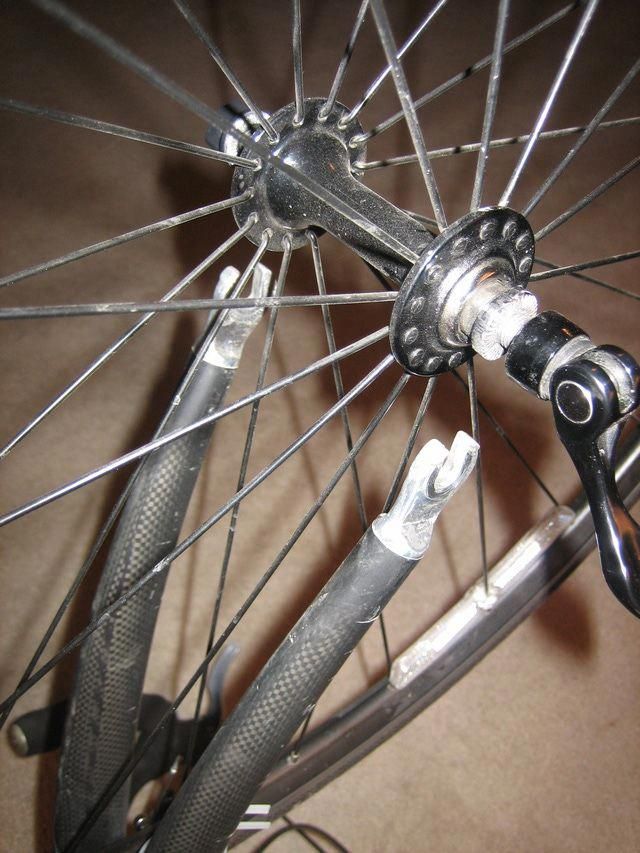 I saw some users adding toothpaste; as they said, toothpaste is an effective way to clean their tires. I didn’t yet try it, but I will be using it soon and sharing how it was.
I saw some users adding toothpaste; as they said, toothpaste is an effective way to clean their tires. I didn’t yet try it, but I will be using it soon and sharing how it was.
If you want, you can also avoid using baking soda and only soapy water as a degreaser to do the task. The more bubbles you have in the cleaner, the more effective it will be.
Step Three:
Now, take some solution in a spray bottle and allow the left ones to be in the bucket. Spray the solution all over the rubber tires, especially between the tread and the inner circumference (inner sidewall). Let the solution absorb for five minutes, so the grease becomes wet and easily comes off. It’s time for the final cleaning. Take a big scrubbing brush, not the steel or harsh scrubber, the big soft brush or nylon bristle brush. Dip the brush in the solvent and scrub the rubber wheel with it.
Start from cleaning the valve, and end after all around the tires, including the spokes, chain, and hub. Here you have to be a little careful, avoid bending the valve, and cover the valve with a dust cap for better protection. It will ensure no dirt or mud inside the valves. To reach each part of the dirty tire, take help from an old toothbrush. A toothbrush will reach the places that are hard to reach and clean. Repeat the same process with the rear wheel.
Here you have to be a little careful, avoid bending the valve, and cover the valve with a dust cap for better protection. It will ensure no dirt or mud inside the valves. To reach each part of the dirty tire, take help from an old toothbrush. A toothbrush will reach the places that are hard to reach and clean. Repeat the same process with the rear wheel.
Step Four:
After scrubbing enough, if you are satisfied and ensure no dirt and debris have been removed, rinse away with warm water. If some dirt is still there, repeat the same process. After removing the grime, wipe off the wheels properly with the help of a damp sponge or rag to neat, clean the tires. Keep doing this until all the tires are thoroughly cleaned. Rinse once again with warm water.
Then use a towel or dry rag and wipe away the bike parts to dry them. Make sure the tires are dry well because if they remain wet for a long time, mold can attack them. Wipe away the sidewalls and rim as well.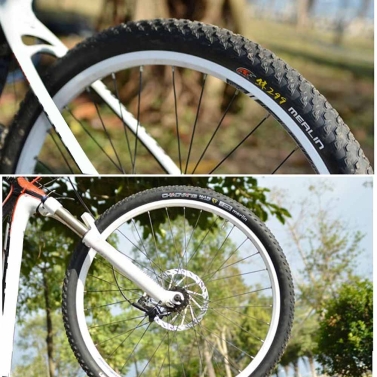 After the tires are dry, lube them with the chain ring.
After the tires are dry, lube them with the chain ring.
Step Five:
Though I am adding it, it’s not a step or part of clean tires. It’s not a degreaser and is optional. You can follow it or not; it depends on you.
Did you hear about rosemary oil or wintergreen berry oil? Or olive oil or coconut oil? Any of the mentioned oil will work to make the tire shine. Take some oil in a rag or towel, and dab the rims and rubber wheel with it. Make sure to grease each rim corner and spins with this towel.
This will ensure the rim becomes shiny and no peeling of paint for a long time. Some also groove using petroleum instead of oil. They find it kinda effective, but I didn’t try yet; if you want, you can give it a chance.
 It’s the best time to check.
It’s the best time to check.Conclusion
Cleaning bike tires is no longer painful when you know how to do it. I have shared an effective method and divided them into some simple steps so you can follow them easily. My cleaning process on how to clean bike tires is the method mostly I used to clean my bike tires, especially when I want to avoid taking them to a local bike shop for cleaning. This method saves my money along with time. Let me know after trying this method how effective it was.
If your bike tires are black, there is no way to make them white again without painting again. But if they are just dirty, then you can clean them using a mixture of baking soda and water and then rinse with warm water. This cleaning method is enough to clean dirt from your white dirty tires and make them white again.
This cleaning method is enough to clean dirt from your white dirty tires and make them white again.
Start by placing the bike upside down and shaking it to remove any loose dirt. Spray a solution of dish soap and water on the tire, let sit for 5 minutes, then rinse with clean water.
Apply baking soda to the tire and scrub with a brush or toothbrush until bubbles appear and it turns white again (this will take about 15 minutes). Rinse off the baking soda with clean water, then dry with a towel before riding your bike again!
How do you clean bike wheels?One of the best ways to clean bike wheels is by using a brush. A simple solution for removing road dirt and grime from your bike wheel rims is a rag soaked in dish soap, then wrung out.
Another way to clean your bike wheel rims is by using a spray bottle with water and some mild dish soap. Just spray on the rim and let it sit for a few minutes before wiping off with a dry cloth or paper towel.
Finally, you can use an old toothbrush and mild soap solution to scrub away any stubborn spots that don’t come off with water alone.
How do you clean mountain bike tires?To clean mountain bike tires, you need to use a brush and soap solution.
First, remove the tire from the wheel. Then fill a bucket with cold water and add dish soap (or your favorite detergent) and let it sit for about 10 minutes.
Next, scrub your tires using a bicycle brush or car wash brush, rinsing them off in the bucket of soapy water after each stroke.
After scrubbing thoroughly, rinse your tires in cool water until they are no longer sudsy before mounting them back on the wheel.
Disclosure: This site is a participant in the Amazon Associates Program. As an Amazon Associate, I Earn From Qualifying Purchases.
 https://www.sportek.in.ua
https://www.sportek.in.ua Nikolaev bicycle shop "Sportek"
Published: 07/09/2016
Edited: 12/04/2020
Let's start with the most important thing - it makes sense to put tires with different treads only for off-road driving (mud, forest, earth, sand, gravel, etc.). When driving on asphalt and even normal dirt roads, this does not make any sense.
Well, now let's try to figure out which tires can be put on the front wheels when driving off-road, and which ones on the rear wheels. Why do it and what it gives the cyclist.
We have a separate article on the types of tires on our website: “Which tire to choose for a bike”.
In this article we will only talk about mud and "toothy" protectors.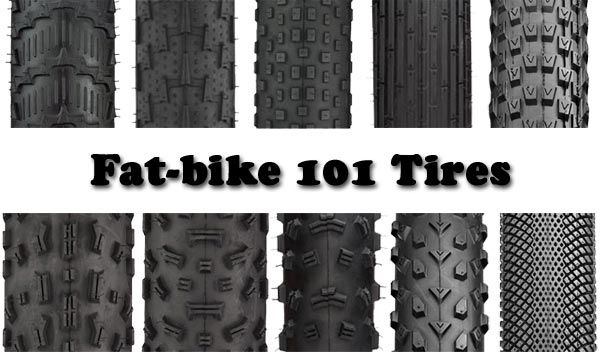
First of all, you need to understand that each wheel has slightly different functions when riding, well, except for spinning and rolling the bike.
When riding, most of the stability and maneuverability comes from the front wheel. It plays a major role in cycling. After all, it is his cyclist who turns with the steering wheel. It is also more important when braking.
The grip of the front wheel with the road surface completely depends on the handling of the bike. It has worse traction than the rear wheel. The cyclist puts pressure on the front wheel only with his hands, while the main weight falls on the rear wheel.
The weight distribution of a cyclist on the wheels looks something like this: 35% of the weight falls on the front wheel and 65% on the rear.
Judge for yourself: if there is a smooth tire on the front wheel, and when turning it starts to slip in the mud, then the bike will simply skid on the turn and everything will end up falling into this very mud.
Almost every cyclist has experienced a front wheel slip at least once. Everything happens very quickly, often not noticeable and almost always ends in a fall.
So one of the main requirements for a front tire is to keep the bike from side slipping.
The rear wheel skid is compensated by the front wheel or quick support on the foot and you, in the worst case, will get mud on your foot, but not fall.
The rear wheel is responsible for the movement of the bike. It is more loaded and because of this it has initially better grip. The main requirement for the rear wheel tread is a large traction force in the plane of rotation of the wheel to transfer the muscular effort of the cyclist's legs.
But the more the wheel is loaded, the more it resists rolling. Therefore, a smoother tire than the front wheel will make the whole bike roll more easily. Moreover, the rear wheel skids less often and, as mentioned above, its skidding is easier to compensate. There is no need to just go to extremes and put slicks on it. Remember, we are only talking about toothy tires. This refers simply to a different degree of “toothiness” and tread height.
Remember, we are only talking about toothy tires. This refers simply to a different degree of “toothiness” and tread height.
Next, I would like to note a few more points when installing different tires:
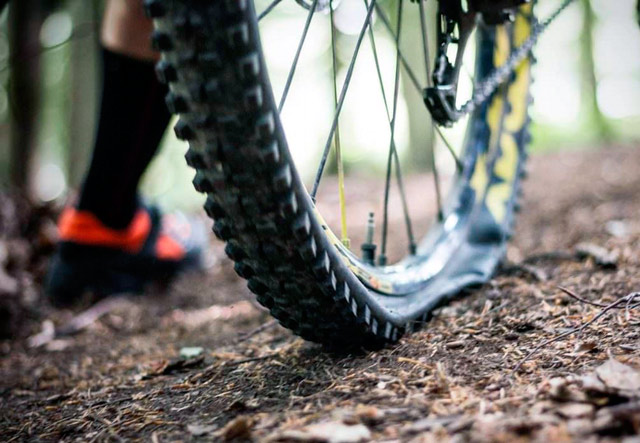
If the tread pattern resembles the English letter "V" as, for example, in the figures below,
then when it is installed on the rear wheel, there should be a trace of the form: “>>>>>>>”, and on the front, on the contrary, of the form: “<<<<<<<<” (imagine that the bike rides from left to right).
Why is that? As mentioned above, the rear wheel is more responsible for traction, ensuring the bicycle's cross-country ability. Therefore, it seems to rest on the road with two legs of the letter "V" and creates a better grip with it.
The front wheel is responsible for the bike's maneuverability and braking. Therefore, when braking, the front wheel already rests on the road with two legs of the letter “V”.
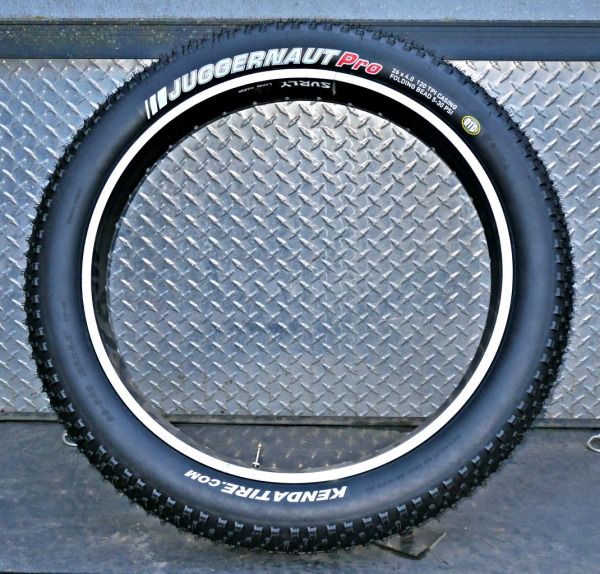 If there is absolutely no money for new tires, then it can still be done for trips on dry asphalt and soil, but for off-road it is not recommended to make such rearrangements from the word “completely”. Better throw out the old ones and buy new ones. You can also change the front to the rear only if the bike has the same tires front and rear.
If there is absolutely no money for new tires, then it can still be done for trips on dry asphalt and soil, but for off-road it is not recommended to make such rearrangements from the word “completely”. Better throw out the old ones and buy new ones. You can also change the front to the rear only if the bike has the same tires front and rear.  When driving on asphalt and rolled dirt roads, this does not make sense.
When driving on asphalt and rolled dirt roads, this does not make sense.
Featured Products
170 UAH
Bicycle tire 16x2" (54-305 ISO)
100 UAH
Bicycle tire 20x2.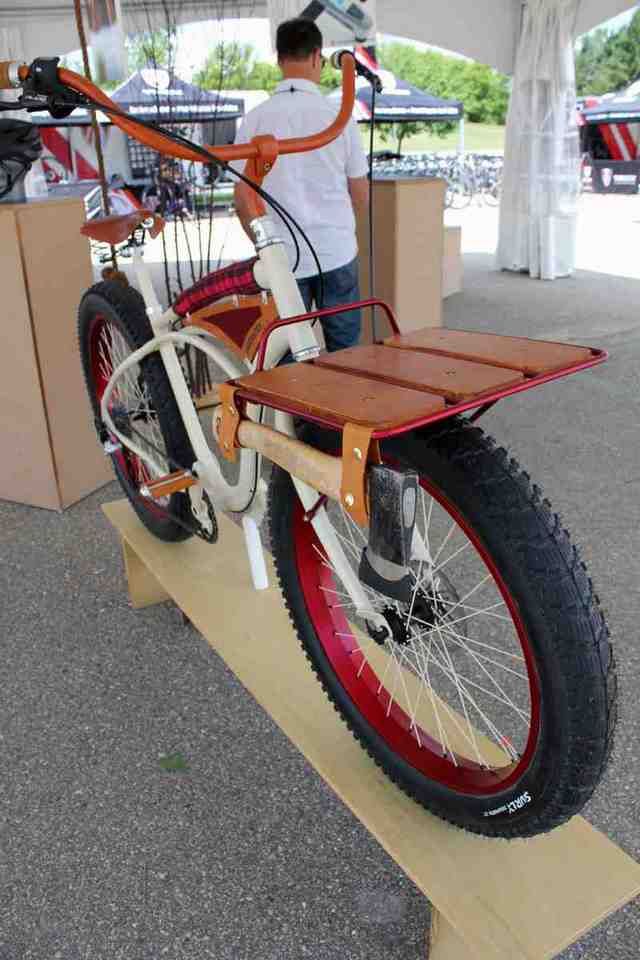 125 (57-406 ISO)
125 (57-406 ISO)
Temporarily absent
168 UAH
Bicycle tire 26x1.95" (50-559 ISO)
Temporarily absent
165 UAH
Bicycle tire 28x1.75" (47-622 ISO) ChaoYang
Temporarily absent
Comments (4)
x
Nikolaev bicycle shop "Sportek"
Published: 01/27/2017
Edited: 06/01/2021
Sooner or later, almost every cyclist faces the question of replacing the rubber on the wheel or the cameras for them.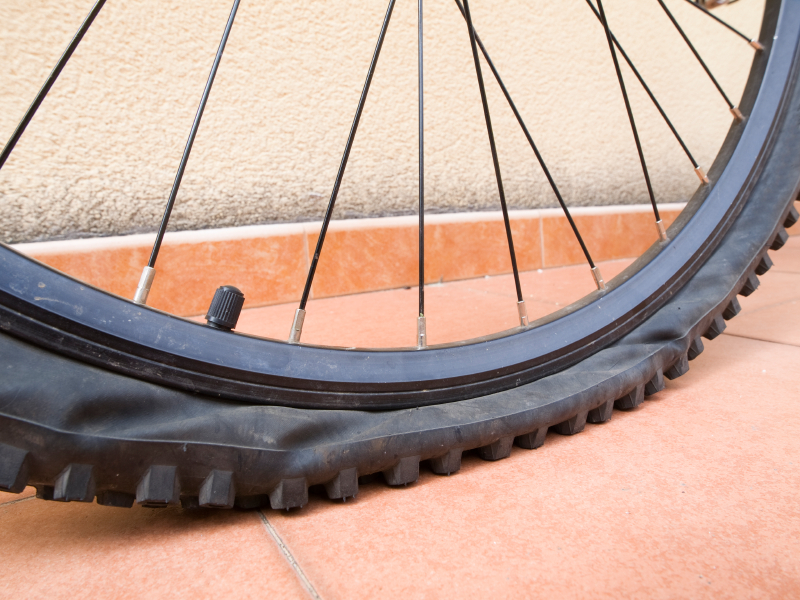
The easiest way, of course, is to look at the size of the tire currently installed on the bike (it is written on the side of it), and look for exactly the same. On some rims, their landing diameter and width are also written.
In life, everything is always a little more complicated and it often happens that the tire you like has a marking that is not entirely clear or does not match the marking on your rubber. Sometimes it is necessary to replace the old bicycle rubber, which has served for many years, with a more modern one.
What to do? You can’t put a tire on a bike over the Internet, but you don’t want to pay money just like that.
In this article, we will try to help you understand the markings on bicycle tires and find out which of them are interchangeable.
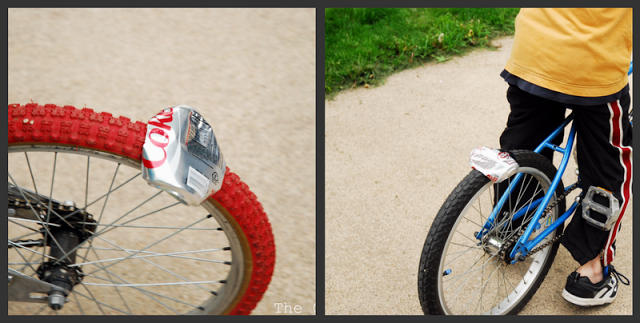
The first thing to know when choosing a tire is the wheel size. They are usually measured in inches, but sometimes in mm. There are not very many of them and the most common ones are 16, 18, 20, 24, 26, 27.5, 28, 29.
At the same time:
Further, what else you need to know is the seat size (diameter) of the rim or BSD (Bead Seat Diameter). It is the most important and determines the interchangeability of tires. If this number matches at the rim, tire, or tube, then that tire or tube fits those rims. And if the width of the new rubber can be changed, then the landing size will not change much.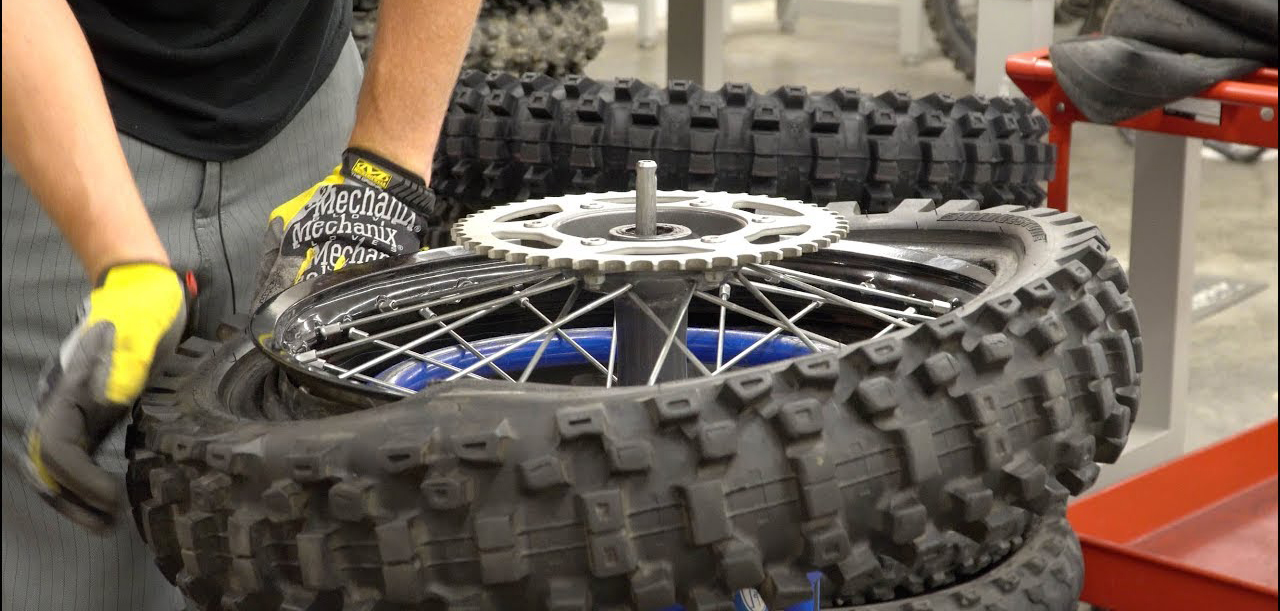
If the size (numbers in mm) is written on the wheel (rim), for example, as in the photos above, they accurately indicate the fit size of the rim and its width, which is the main data for selecting the inner tube and tire for the wheel.
There are several types. The confusion in the designation of sizes began in the middle of the 20th century, and today Great Britain and France use their own designations for marking.
Previously, the sizing system was based on the outside diameter of the tires. It was measured in inches (24", 26", 28") or in millimeters (500, 650, 700, etc.).
Over time, this system lost its meaning, because different products with the same outer diameter wheels (together with the height of the tire) did not match the inner diameter (rim diameter) on which this tire was put on.There were also marketing moves of manufacturers, and the accuracy of translation and rounding of measurements in inches is lower than in millimeters.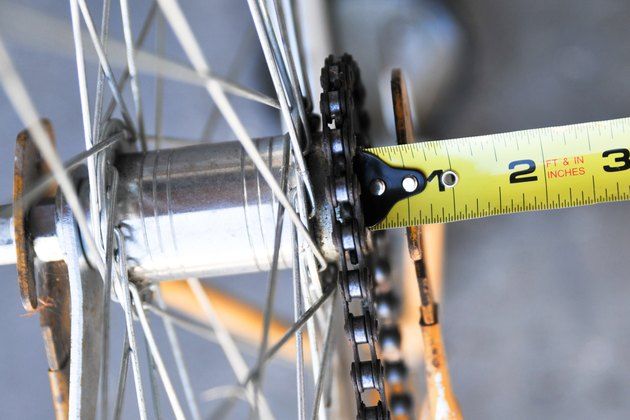 0003
0003
To overcome these confusions and bring all sizes to the same standard, the International Organization for Standardization (ISO - International Organization for Standardization) has developed a universal system for designating tire sizes - ISO 5775 . This system was previously known as " ETRTO ". It was proposed by the organization of the same name: ETRTO (European Tire and Rim Technical Organization or in Russian: "European technical organization for rims and tires").
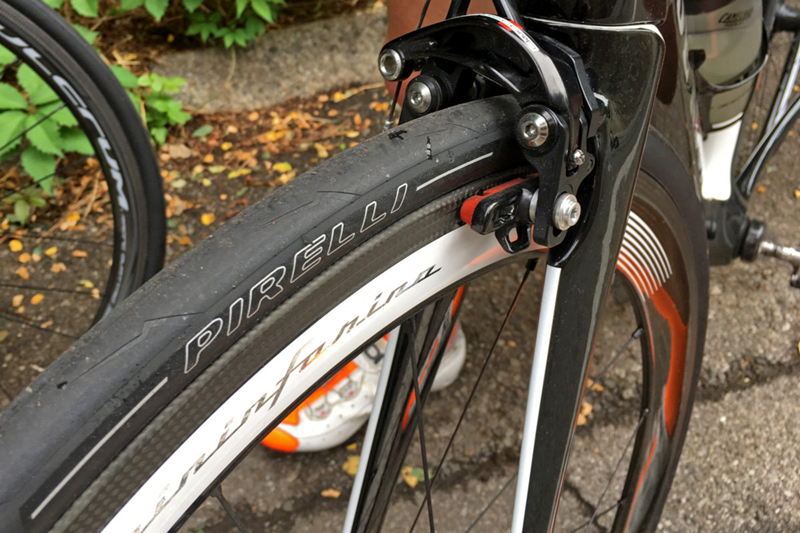
At first it was in the form of a number and a letter, for example, 700C - 700 the outer diameter of the tire is in mm. The letter determined the width from "A" - the narrowest to "D" - the widest.
Now the marking has acquired a more modern look. For example: 700 x 35C. Here the outer diameter of the tire is 700 mm and its width is 35 mm. The letter at the end indicates the inner (landing) diameter. In this case, "C" is 622 mm.
For example: 700 x 35C. Here the outer diameter of the tire is 700 mm and its width is 35 mm. The letter at the end indicates the inner (landing) diameter. In this case, "C" is 622 mm.
Note a very important nuance and paradox in inch sizes. Tire sizes can be specified as a decimal fraction, such as 26x1.75, or as a simple fraction, such as 26x1 3/4.
Mathematically, these fractions are equal: 1.75 = 1 3/4.
But, in terms of fit size and tire width in millimeters, this is not always the case, and the most unpleasant thing is that tires with such dimensions can be not interchangeable with .
And this circumstance should always be taken into account when purchasing a new bicycle tire.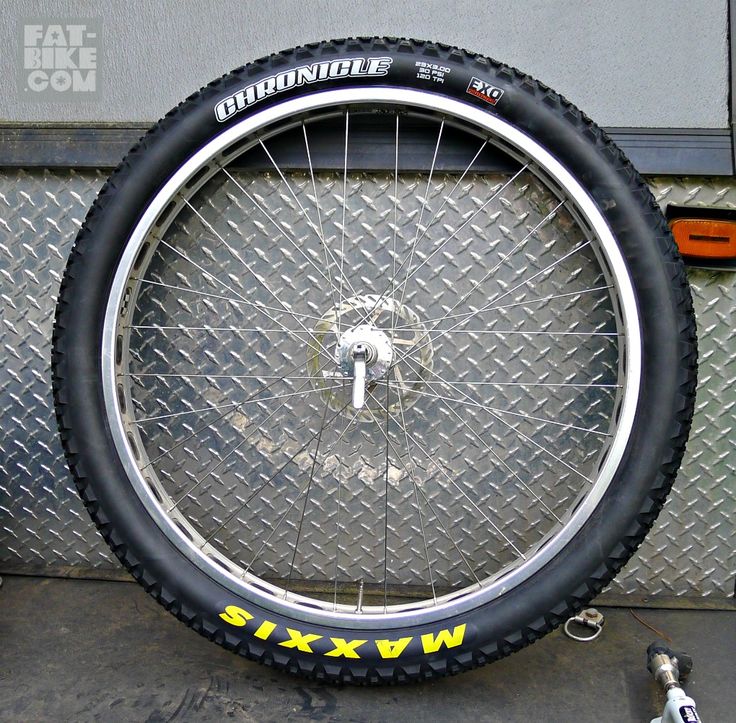
In the table below, we have tried to collect the most common tire size designations in different systems and show their compatibility.
Perhaps not all dimensions encountered in life were taken into account, but if you have a tire with dimensions not listed in the table, try to estimate its dimensions based on similar nearest or similar dimensions.
| Rim bore size in mm according to ISO | Tire size in plain and decimal inches | French tire size | Tire size in mm according to ISO (width - bore) | Explanations |
| 681 | 22-681 | Sports track bike B-64 "Record" KhVZ (1958) | ||
| 642 | 28 x 1 5/8 x 1 1/2 | 700-28A | 28-642 | Obsolete size |
| 28 x 1 3/8 | 700-35A | 37-642 | ||
| 635 | 28 x 1 1/2 x 1 1/8 | 700-28B | 32-635 | American, English, Danish, Chinese, Indian Road Models |
| 28 x 1 1/2, 28 x 1 1/2 x 1 5/8 | 700-38B, 700B Standard | 40-635 | ||
| 28 x 1 5/8 x 1 1/2 | 44-635 | |||
| 630 | 27 x 7/8 | 22-630 | Road bikes, including older models | |
| 27 x 1 | 25-630 | |||
| 27 x 1 1/8 | 28-630 | |||
| 27 x 1 1/4 | 32-630 | |||
| 27 x 1 3/8 | 37-630 | |||
| 27 x all options | ||||
| 622 | 29 x all variants | 700C | This size was invented by marketers for tires with a bore diameter of 622 mm.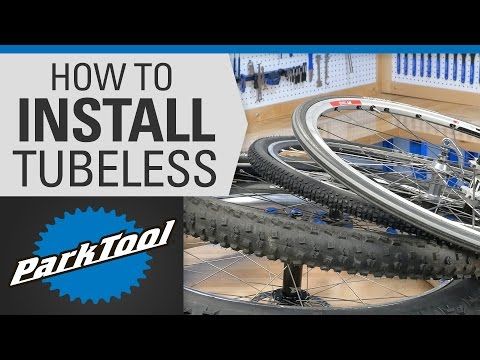 They differ from 28 only in tire height. They differ from 28 only in tire height. | |
| 28 x decimal | 700C | For 622 mm tires | ||
| 28 x 3/4 | 700-18C 700x18C | 18-622 | ||
| 700-19C 700x19C | 19-622 | |||
| 28 x 3/4 | 700-20C 700x20C | 20-622 | ||
| 28 x 1 28 x 7/8 | 700-23C 700x23C | 23-622 | ||
| 28 x 1 | 700-25C 700x25C | 25-622 | ||
| 28 x 1 1/8, 28 x 1 5/8 x 1 1/8 | 700-28C 700x28C | 28-622 | ||
| 28 x 1.20 | 700-30C 700x30C | 30-622 | ||
| 28 x 1 3/4, 28 x 1.5 | 700x38C 700-40C | 40-622 | Road bikes: "Ukraine", "Minsk", "Sura", "Velta", "Aist" (111-321, 111-322) | |
| 28 x 1 1/2, 28 x 1 5/8 x 1 3/8 | 700C 700x35C 700x38C | 35-622 | Road bikes: "Ukraine", "Minsk", "Sura", "Velta", "Aist" | |
| 27 x 1 1/4, 28 x 1 5/8 x 1 1/4 | 700-32C 700x32C | 32-622 | Road and sport-touring bicycles, "Tourist", "Sport", "Sputnik" | |
| 28 x 1 5/8 x 1 1/4 | Obsolete Canadian designation F13 | |||
28 x 1.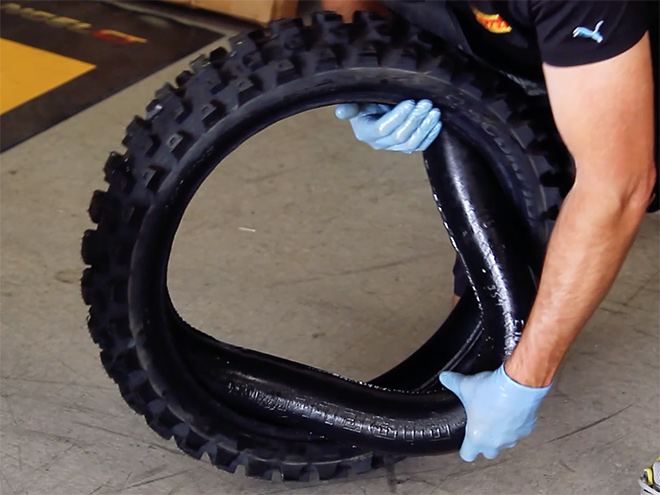 4 4 | 700-35C 700x35C | 35-622 | Road bikes | |
| 28 x 1.5 | 700x38C 700-38C 700-40C 700x40C | 40-622 | ||
| 28 x 1 3/8 x 1 5/8 | 37-622 | |||
| 28 x 1.6 | 700-42C 700x42C | 42-622 | ||
| 28 x 1.6 | 700-44C 700x44C | 44-622 | ||
| 28 x 1 5/8 x 1 3/4 | 700-45C 700x46C | 45-622 | ||
| 28 x 1.75, 28 x 1 5/8 x 1 3/4 | 700-47C 700x47C | 47-622 | ||
| 28 x 2.00 | 700-50C 700x50C | 50-622 | ||
| 600 | 22 (23, 24, 25, 27, 28, 30)-600 | Old Soviet sports and track bikes | ||
| 599 | 26 x 1.25, 26 x 1.375 | 32-599 | Very old American light bicycles. | |
| 26 x 1 7/8 | 47-599 | ZiF (Penza) 190-535 "Samson" | ||
| 597 | 26 x 1 1/4 (EA1) (England) | 32-597 | English old sports and club bikes. | |
| 26 x 1 3/8 (S-6) | 37-597 | Light bicycles of the American firm Schwinn. | ||
| 590 | 26 x 1 1/8 | 28-590 | Soviet bicycles ZiF (Penza) "Diana", "Prima", "Turn", "Relay", "Sura", "Breeze", "Temp" American and English 3 and 10 speed. | |
| 26 x 1 1/4 | 32-590 | |||
| 26 x 1 3/8 (E.A.3) (England) | 650A | 35-590 | ||
| 26 x 1 3/8 | 650-35A 650x35A | 37-590 | ||
| 26 x 1 5/8 | 44-590 | |||
| 587 | 700D | Old size on some GT models | ||
| 584 | 27.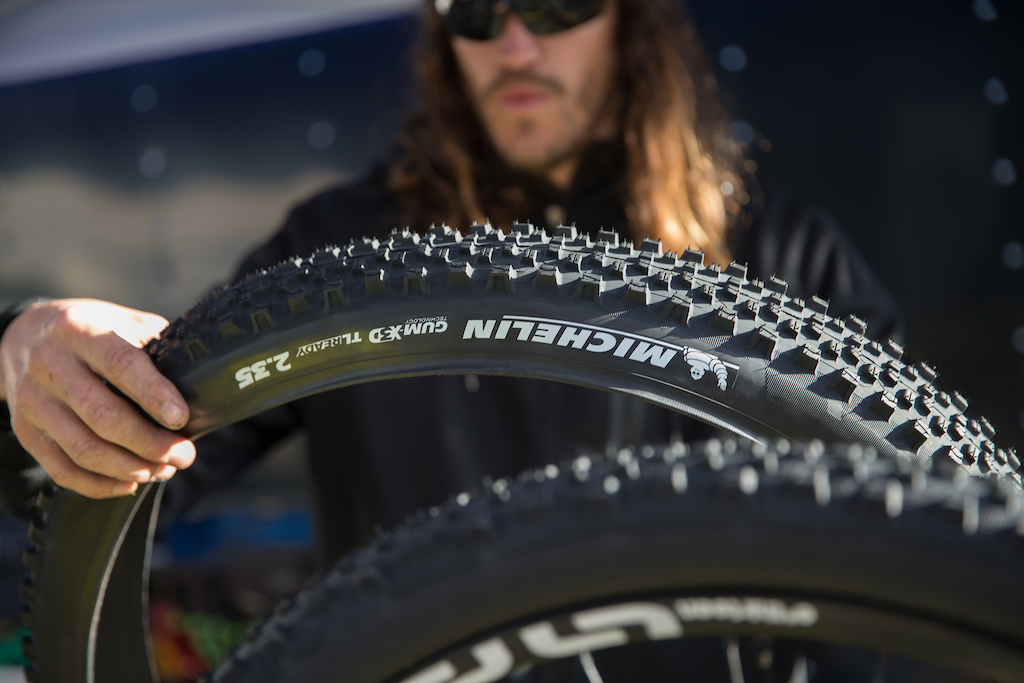 5 x 1.50 5 x 1.50 | 650x38B | 40-584 | French road bikes, touring bikes with cargo, tandems, some Raleigh (USA), old Schwinn mountain bikes |
| 26 x 1 1/2 | 650B | 37-584 | ||
| 27.5 x 1.5 | 40-584 | |||
| 27.5 x 1.65 | 44-584 | |||
| 27.5 x 1.75 | 47-584 | |||
| 27.5 x 2 | 52-584 | |||
| 27.5 x 2.1 | 54-584 | |||
| 27.5 x 2.25 | 57-584 | |||
| 27.5 x 2.3 | 60-584 | |||
| 27.5 x 2.4 | 62-584 | |||
| 27.5 x 2.8 | 70-584 | |||
| 571 | 26 x 3/4 | 650x20C | 20-571 | Triathlon, time trial, small road bikes, some French Peugeot bikes. |
| 26 x 7/8 | 650x23C | 23-571 | ||
| 26 x 1 | 650C | 23-571 | ||
26 x 1. 75 75 | 47-571 | |||
| 26x1 3/4 (S-7) | Road Schwinn | |||
| 559 | 26 x 1.0 | 25-559 | Most mountain bikes. Classic landing diameter for 26 wheels. | |
| 26 x 1.25 | 32-559 | |||
| 26 x 1.35 | 35-559 | |||
| 26 x 1.4 | 37-559 | |||
| 26 x 1.5 | 40-559 | |||
| 26 x 1.6 | 44-559 | |||
| 26 x 1.75 26 x 1.75 x 2 | 47-559 | |||
| 26 x 1.95 | 50-559 | |||
| 26 x 2.00 | 52-559 | |||
| 26 x 2.10 | 54-559 | |||
| 26 x 2.15 | 55-559 | |||
26 x 2. 25 25 | 57-559 | |||
| 26 x 2.3 | 60-559 | |||
| 26 x 2.4 | 62-559 | |||
| 26 x 3.0 | 75-559 | |||
| 26 x 3.7 | 95-559 | |||
| 26 x 4.00 | 100-559 | |||
| 26 x 4.5 | 115-559 | |||
| 26 x 4.8 | 120-559 | |||
| 547 | 24x1 1/4 | English children's and American firm Schwinn | ||
| 24x1 3/8 (S-5) | Schwinn American children's bicycles | |||
| 540 | 24 x 1 1/8 | 600A | 28-540 | Children's English and European bicycles, most wheelchairs |
| 24 x 1 1/4 | 32-540 | |||
| 24 x 1 3/8(E-5), 24 x 1 3/8 A | 37-540 | |||
| 533 | 24 x 1 1/2 | 37-533 | "Salute", "Altair", "Ervi", "Eaglet", "Erelyukas", "Swallow" ("Kregzdute", "Kregzhdute" - Siauliai bicycle factory "Vairas" Lithuania). Be careful when replacing as not all 24" tires will fit 533 wheels. | |
| 531 | 24 x 1 5/8 x 1 1/2 | 44-531 | ||
| 520 | 24x1 | 25-520 | Road wheels for children's bikes | |
| 507 | 24 x 1.5 | 40-507 | Children's mountain. "Salute", "Altair", "Ervi" | |
| 24 x 1.75 | 47-507 | |||
| 24 x 1.95 | 50-507 | |||
| 24 x 2.0 | 51-507 | |||
| 24 x 2.125 | 54-507 | |||
| 24 x 2.25 | 57-507 | |||
| 24 x 2.35 | 60-507 | |||
24 x 2. 5 5 | 62-507 | |||
| 24 x 2.6 | 65-507 | |||
| 24 x 2.75 | 70-507 | |||
| 24 x 3.0 | 75-507 | |||
| 501 | 22 x 1.0 | 25-501 | European bikes | |
| 22 x 1 1/4 | 32-501 | |||
| 22 x 1 3/8 | 37-501 | |||
| 490 | 550-28A | 28-490 | European Road Kids Bikes | |
| 22 x 1 3/8 x 1 1/4 | 550-32A | 32-490 | ||
| 22 x 1 3/8 | 550-35A | 37-490 | ||
| 489 | 22 x 1.0 | 25-489 | European bikes | |
| 22 x 1 3/8 | 37-489 | |||
| 22 x 1 3/8 x 1 1/4 | 40-489 | |||
22 x 2.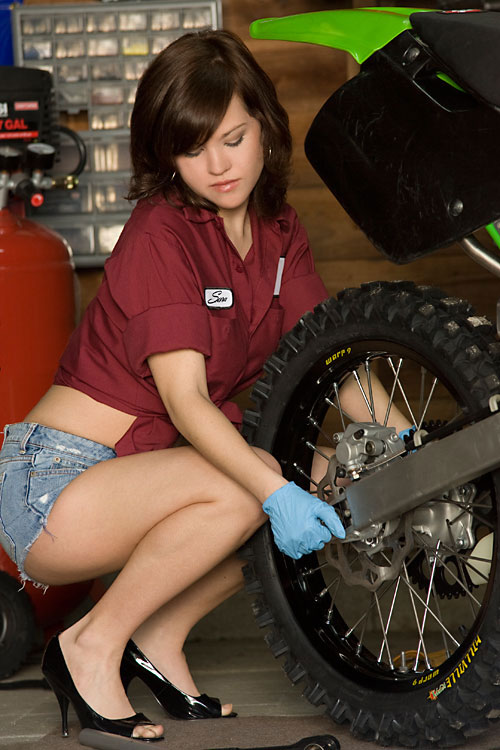 00 00 | 50-489 | |||
| 457 | 22 x 1.75 to 2.125 | Children's bicycles | ||
| 451 | 20 x 1 1/8 | 28-451 | BMX for light riders, light children's bikes, some ligerades. Wheels on some types of wheelchairs. | |
| 20 x 1 1/4 | 30-451 | |||
| 20 x 1 3/8 | 37-451 | |||
| 445 | 20 x 1 1/4 | 30-445 | "Schoolboy" (old Soviet models) | |
| 440 | 500-28A | 28-440 | European folding, children's bicycles | |
| 500-35A | 37-440 | |||
| 20 x 1 1/2 | 500-38A | 40-440 | ||
| 438 | 20 x 1 3/8 | 37-438 | European bikes | |
| 20 x 1 3/8 1 1/2 | 40-438 | |||
| 432 | 20 x 2 1/2 | 40-432 | European bikes | |
| 428 | 20 x 2.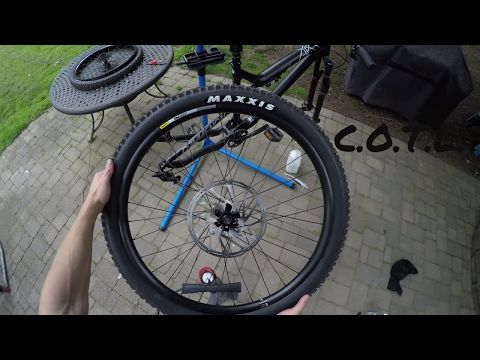 00 00 | 54-428 | European bikes | |
| 419 | 20 x 1 3/4 | Schwinn American children's bicycles | ||
| 406 | 20 x 1.25 | 32-406 | Most BMX bikes, kids and folding models. "Venta" (folding model 175-811). "Stork" (folding, model 113-322) "Tisa-2", "Cross", "KAMA", "DESNA", "Schoolnik", "Velta Kama", "Dubisa" (Siauliai bicycle factory), "Eureka" and other folding and old Soviet models. Folding "Mustang" | |
| 20 x 1.35 | 35-406 | |||
| 20 x 1 3/4 20 x 1.5 | 40-406 | |||
| 20 x 1.75, 20 x 1.75 x 2 | 47-406 | |||
| 20 x 1.95 | 50-406 | |||
| 20 x 2.00 | 54-406 | |||
20 x 2.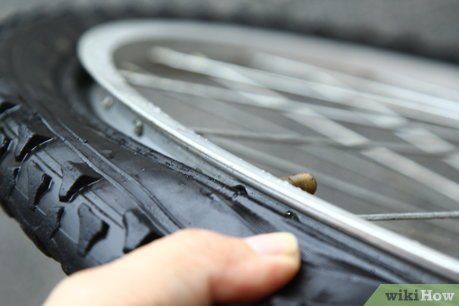 125 125 | 57-406 | |||
| 20 x 2.35 | 60-406 | |||
| 20 x 2.5 | 62-406 | |||
| 20 x 2.6 | 65-406 | |||
| 20 x 2.75 | 70-406 | |||
| 20 x 3.0 | 75-406 | |||
| 390 | 18 x 1 1/8 | 450-28A | 28-390 | Children's European bikes |
| 18 x 1 3/8 | 450-35A | 37-390 | ||
| 450-55A | 55-390 | |||
| 387 | 18 x 1 1/2 | 37-387 | Children's European bicycles | |
| 369 | 17 x 1 1/4 | 32-369 | Bicycles Alex Moulton | |
| 355 | 18 x 1 1/8 | 28-355 | Children's bicycles | |
18 x 1.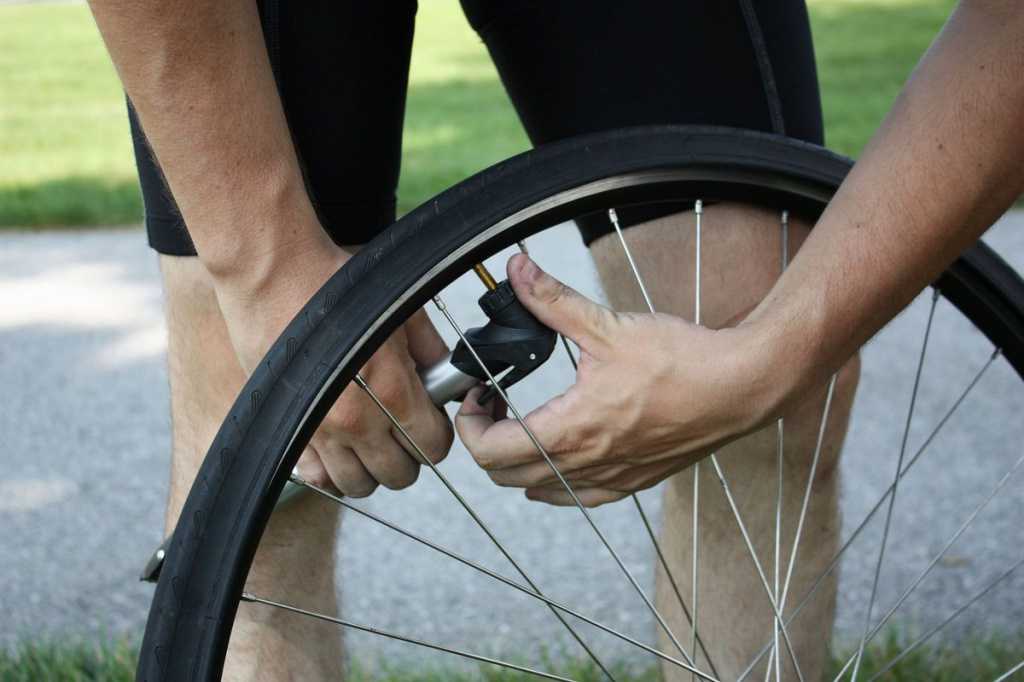 25 25 | 32-355 | |||
| 18 x 1.35 | 35-355 | |||
| 18 x 1.5 | 40-355 | Birdy folding bikes. | ||
| 18 x 1.6 | 42-355 | Children's bicycles | ||
| 18 x 1.75 | 47-355 | |||
| 18 x 1.95 | 50-355 | |||
| 18 x 2.0 | 54-355 | |||
| 18 x 2.125 | 57-355 | |||
| 349 | 16 x 1 1/8 | 28-349 | Old Moulton, Brompton and other folding bicycles, ligerade front wheels, children's bicycles. | |
| 16 x 1 1/4 16 x 1.25 | 32-349 | |||
| 16 x 1.35 | 35-349 | |||
| 16 x 1 3/8 | 37-349 | |||
| 340 | 400-30A | 28-340 | Children's European bikes | |
| 16 x 1 3/8 x 1 1/4 | 400-32A | 32-340 | ||
| 16 x 1 3/8 | 400-35A | 37-340 | ||
| 16 x 1 5/8 | 400A | 44-340 | ||
| 335 | 16 x 1 3/8 | Children's Polish bicycles | ||
| 330 | 16 x 1 1/2 | 400-38B | 40-330 | Children's bicycles |
| 317 | 16 x 1 3/4 | Schwinn American children's bicycles | ||
| 305 | 16 x 1. 5 5 | 40-305 | Children's bicycles, folding, touring and some ligerades. | |
| 16 x 1.75 | 47-305 | |||
| 16 x 1.95 | 50-305 | |||
| 16 x 2.0 | 54-305 | |||
| 16 x 2.125 | 57-305 | |||
| 16 x 2.5 | 62-305 | |||
| 298 | 14 x 1 1/4 | 350-32A | 32-298 | Carriages, children's bicycles, balance bikes |
| 288 | 14 x 1 3/8 | 350A, 350-35A | 37-288 | Children's bicycles, balance bikes |
| 14 x 1 5/8 | 350-38A | 40-288 | ||
| 14 x 1 5/8 x 1 3/8 | 350-42A | 44-288 | ||
| 14 x 1.75 | 47-288 | |||
| 279 | 14 x 1 1/2 | 350-38B | 40-279 | Children's bicycles, balance bikes |
| 254 | 14 x 1.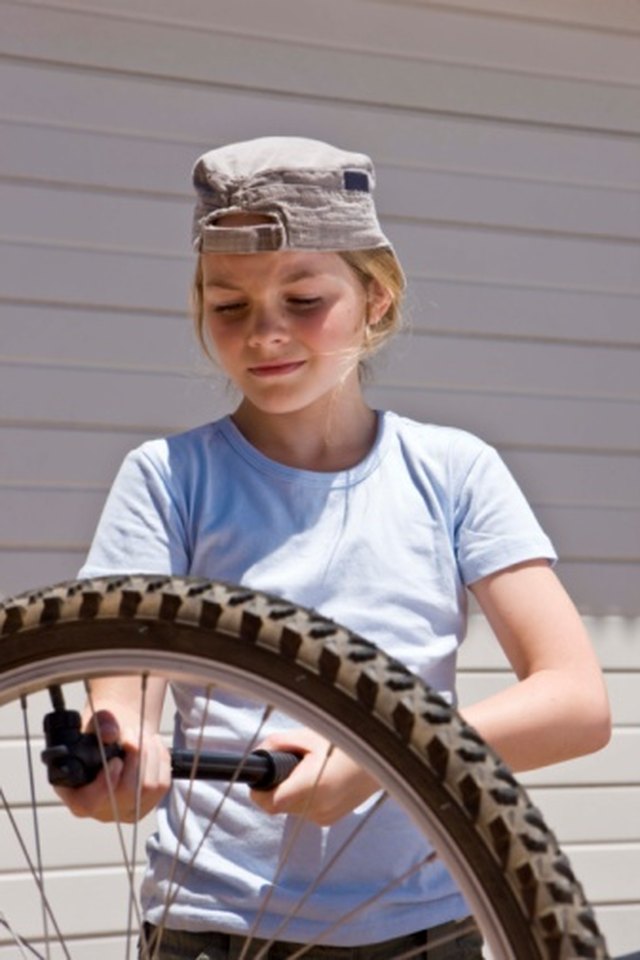 5 5 | 40-254 | Children's bicycles, balance bikes | |
| 14 x 1.75 | 47-254 | |||
| 14 x 2 | 54-254 | |||
| 239 | 12 1/2 x 1 3/8 x 1 1/4 | 300-32A 300x32A | 32-239 | Children's bicycles, balance bikes |
| 205 | 12 1/2 x 2 1/4 | 56-205 | Children's bicycles "KVD", balance bikes, sometimes suitable for baby carriages ("Dutik" tires) | |
| 203 | 12 x 1.75 12 1/2 x 1.75 12 1/2 x 1.9 | 47-203 | Small children's bicycles, balance bikes, baby carriages | |
| 12 x 1.95 | 54-203 | |||
| 12 x 2.0 | 50-203 | |||
| 12 x 2.125, 12 1/2 x 2 1/4 R | 57-203 | |||
| 12 1/2 x 2 1/4 | 62-203 | |||
| 176 | 55-176 | Tires for tricycles, scooters, balance bikes for small children, wheelbarrows and carts, prams | ||
| 152 | 10 x 2 | 54-152 | ||
| 137 | 8 x 1 1/4 | 32-137 |
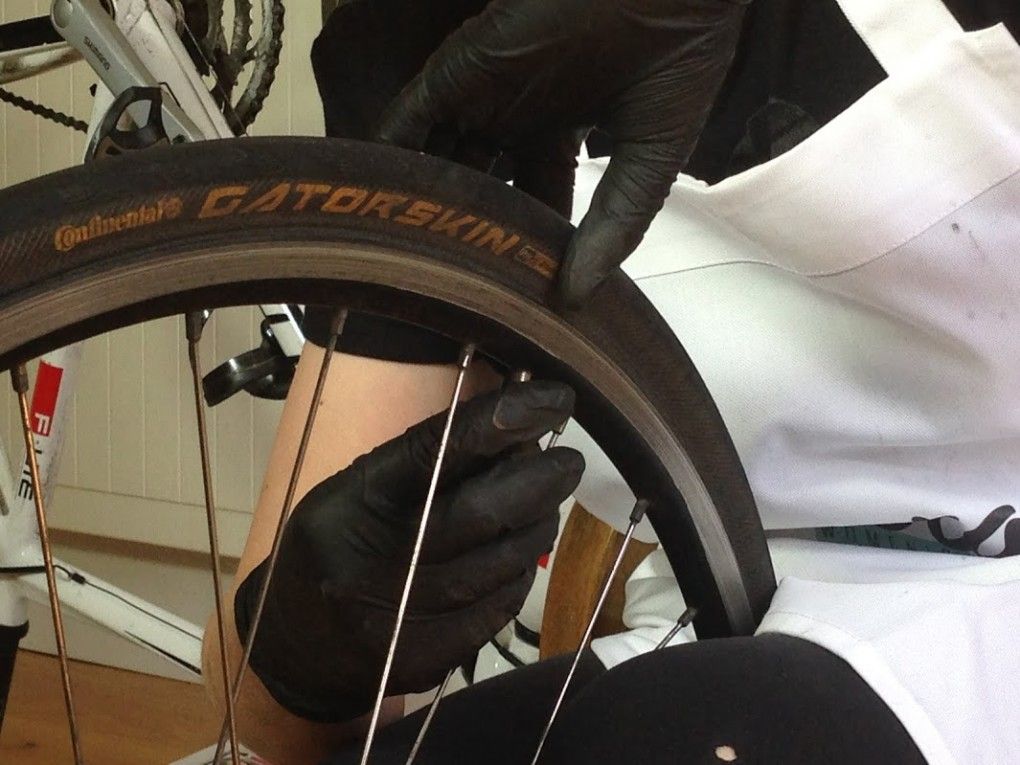 29 tires differ from 28 only in height.
29 tires differ from 28 only in height. Tire width selection is more flexible than rim diameter.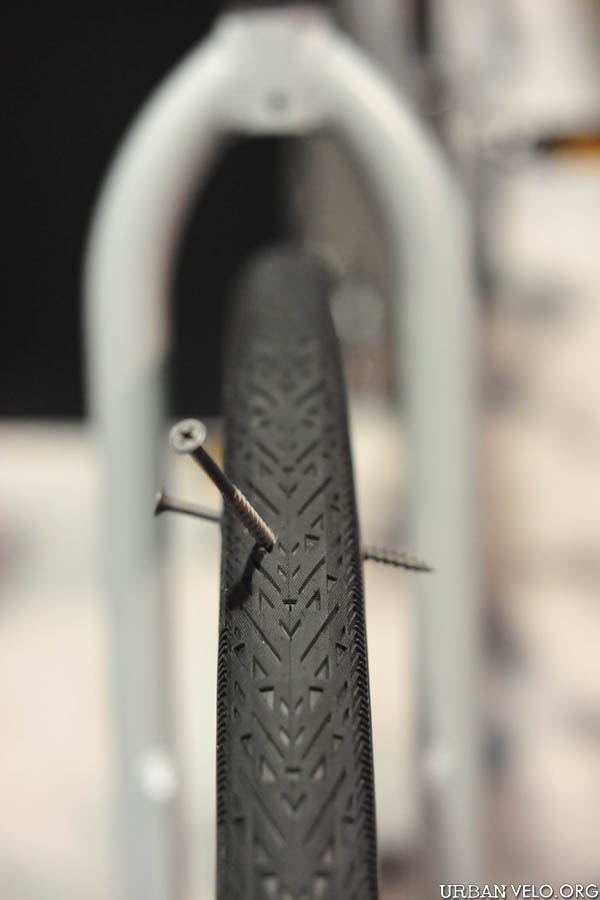
Rim widths are measured and marked in millimeters as shown in the figure at the beginning of the article.
How to measure the rim width is described in a separate article here.
| Rim width in mm | Tire width in mm and inches | Bicycle type |
| 13 | 18 - 25 mm (1") | road and cyclocross models |
| 15 | 23 - 32 mm (1" - 1.25") | |
| 17 | 25-37 mm (1" - 1.5") | light cross-country and hybrid models |
| 18 | 28 - 44 mm (1.1" - 1.75") | heavy XC and hybrid models |
| 19 | 28 - 60 mm (1.1" - 2.35") | MTB (mountain bikes, mountain bikes) |
| 20 | 28 -47 mm (1.1" - 2") | cycling and light extreme |
| 21 | 35 - 50 mm (1. 4" - 2") 4" - 2") | |
| 23 | 40 - 50 mm (1.5" - 2.1") | extreme cycling |
| 25 or more | 44 - 57 mm (1.75" - 2.25") | |
| 32 | 75 mm (3") or more |
This table is a guideline for an average bike. Use it not as a dogma, but as a guideline for selection.
Some manufacturers give their own tables for the tires they produce, according to which they need to be selected for their wheel.

The width of the tire affects rolling and grip. The wider - the better the grip, cornering control, but the worse the roll.
It is considered optimal if the width of the tire is 1.5-2.1 times wider than the inner width of the rim. It is possible and 2.5 times, but this is already an amateur.
The tire-to-rim width ratio affects the tire's cornering behavior. Too wide tires mounted on a narrow rim can simply break. will have a pear-shaped profile.
Further, if toothy rubber is installed on the wheel, then the side spikes on the tread will not be where they should be for sure grip in the turn.
With wide tires on a narrow rim, the side studs will be too high and will not hold properly in the turn.
On narrow tires with a wide rim, the spikes will be from below and with a good slope, the bike will ride on the sidewall, and she is bald.
Below is a famous table compiled by Georg Boeder of tire and rim width recommendations
To quickly convert fractional or decimal inches to mm, you can use the tables here, and for the reverse (from millimeters to decimal and fractional inches) here.